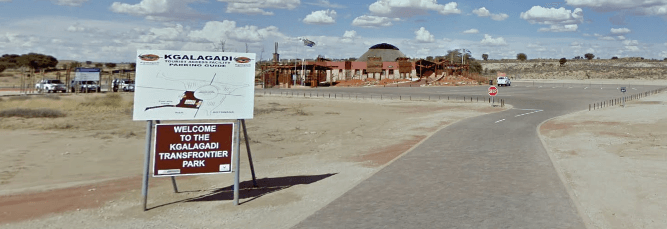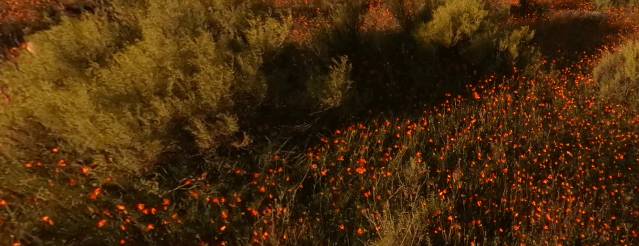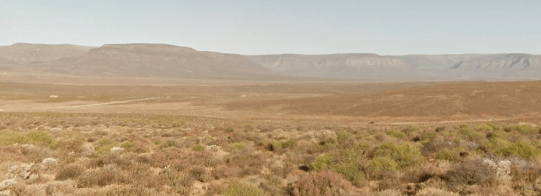Northern Cape national parks information. Book your getaway to one of theses beautiful national parks. Contact details provided. The Northern Cape Tourism Authority (NCTA) is the official marketing agency for the Northern Cape and markets the Northern Cape as South Africa’s premier destination for extreme escapism, exploration and adventure. Physical address: Tourism House. 15 Dalham Road. Kimberley. Contact numbers: 053 832 2657
Augrabies Falls National Park

Dominated by the beautiful and distinct camel thorn tree from which the park derives its name, Mokala (Setswana for Camel Thorn Tree) is a breeding centre for disease free buffalo and various antelope that are then fed back into some of the larger South African national parks.
Augrabies Falls National Park
Augrabies Falls National Park is a national park located around the Augrabies Falls, about 120km west of Upington. It was established in 1966.
The Augrabies Falls National Park covers an area of 820km² and stretches along the Orange River. The area is very arid. The waterfall is about 60 metres high and is awe-inspiring when the river is in flood. The gorge below the falls averages about 240m deep and runs for 18 kilometres. The gorge provides an impressive example of erosion into a granitic basement.
The original Khoikhoi people named the waterfall Ankoerebis, meaning the “place of big noises”. The Trekboers who later settled in the area derived the name Augrabies. There are many deposits of alluvial diamonds along the Orange River and legend has it that the biggest cache of diamonds in the world lies in the swirl-hole eroded into the granite at the foot of the waterfall by the thundering waters.
On the menu of plant species is the enigmatic Quiver tree or Kokerboom (Aloe dichotoma). Traditionally, the Khoisan hunters made their quivers from this tree which dates back thousands of years and which produces vivd yellow flowers in May and June.
The Augrabies Falls National Park offers an ancient landscape that will take you back in time to the world of the first hunter-gatherers.
Just as they did thousands of years ago, if you sit silently you might be treated to the sight of a beautiful pair of klipspringers grazing – all the while keeping alert to the slightest sign of trouble from any of the predators, including leopards, jackals and the African wild cat. The klipspringers are not the only ones that are preyed upon. The park is the natural habitat for other antelope species such as steenbok, springbok, gemsbok, kudu and eland. You will hopefully see them all as you explore the park.
Complete your visit with a bird’s eye view of the park from the top of the Moon Rock – a vast “whaleback” dome which is a prominent landmark of Augrabies Falls. Walking to the summit will give one of the best views of the park and its surroundings.
For reservations to stay on the South African side contact: The South African National Parks Call Centre:
Tel: +27 (0)12 428 9111 Fax: 012 343 0905
Email: reservations@sanparks.org
To contact the Park Tel: +27 (0)54 452 9200 Fax: 054 451 5003
Augrabies Falls National Park
Tel: +27 (0)54 452 9200
Fax: +27 (0)54 451 5003
Kgalagadi Transfrontier Park
The king of beasts flops down on the top of a sand dune, the dry desert wind ruffling his dark mane as he surveys the sprawling plain dotted with thorn trees and fellow creatures that make up this resplendent desert kingdom.
One of the world’s last truly unspoilt ecosystems, the park is a result of the unification of South Africa’s Kalahari Gemsbok Park and Botswana’s Gemsbok National Park. At 38 000km2, it is one of the largest conservation areas in the world.

Red sand dunes with sparse desert scrub and the dry riverbeds of the Nossob and Auob in which thorn tree, raisin bush and shepherd tree predominate, extend across the national boundaries.
The park gives sanctuary to herds of endemic antelope that have roamed the semi-desert savannah and endless pans for aeons, these include: gemsbok (oryx), springbok, blue wildebeest, red hartebeest and eland. Then there are the famed black-maned Kalahari lion, leopard, cheetah and smaller game including mongooses, porcupine and honey badger. 58 mammal, 55 reptile, insect and a host of plant species share the desert and dry while approximately 300 species of bird, including at least 20 species of large raptor, share the endless blue sky.
The park has three traditional rest camps. The main one being Twee, which has chalets, camping facilities, night drives, an information centre, a restaurant, shop, fuel and swimming pool and it offers guided day. Nossob offers chalets, camping, night drives, guided day walks as well as a predator information centre. Mata-Mata has new chalets, a shop, fuel, guided day walks and night drives.
There are also six upmarket unfenced wilderness camps that allow visitors to feel at one with the Kalahari. Kalahari Tented Camp has 15 fully equipped, self-catering units, sleeping two to four people and a swimming pool. The camp overlooks the waterhole in the ancient Auob River. Grootkolk is small and exclusive, only 20km from Unions End. This is the prime predator area.
Kielie Krankie, situated on a high dune, has stunning views over the sand dunes. Four two-bed units overlook a waterhole. Urikaruus, on the banks of the Auob River, is a lofted camp with four two-bed units that also overlooks a waterhole. Two camps, Bitterpan and Gharagab, are only accessible by 4×4. Bitterpan, small and exclusive, is surrounded only by the silence of the great Kalahari, with four two-bed units and Gharagab, just north of Nossob, has four two-bed units that open up to beautiful Kalahari tree and savanna veld.
A passport is not needed to enjoy the Botswana side as long as entry and exit is made through the same gate. Camping in Botswana is available at Polentswa, Rooiputs and Two Rivers. There are two 4×4 routes: Wildernis and Nossob Mabuasehube.
For reservations to camp on the Botswana side of the Park, and to book the wilderness trail contact: The Parks and Reserves Reservation Office: tel 09 (from South Africa) 267 580774; fax 09 267 580775.
For reservations to stay on the South African side contact The South African National Parks Call Centre:
Tel: +27 (0)12 428 9111 Fax: 012 343 0905
Email: reservations@sanparks.org
To contact the Park Tel: +27 (0)54 561 2000 Fax: 054 561 2005
Mokala National Park
Dominated by the beautiful and distinct camel thorn tree from which the park derives its name, Mokala (Setswana for Camel Thorn Tree) is a breeding centre for disease free buffalo and various antelope that are then fed back into some of the larger South African national parks.
Proclaimed as a new national park as recently as June 2007, Mokala’s landscape varies between koppieveld (hills), sweeping plains sprinkled with isolated dolerite hills and the large open sandy plains towards the north and west of the Park. The Riet River runs through the park and visitors can hire canoes for 1-5 hour trips down this waterway. Fly fishing (on a catch-and-release basis) is also permitted.
The Park is 19 611ha in size and boasts the following species: Black Rhino, White Rhino, Giraffe ,disease-free Buffalo, Tsessebe, Roan Antelope, Reedbuck, Gemsbok, Eland, Zebra, Red Hartebeest, Blue, Black Wildebeest, Kudu, Ostrich, Steenbok, Duiker and Springbok.
The three lodges are Mosu, Mofele and Lilydale. Mosu and Mofele are relatively close to each other and both lodges have restaurant, pub and conference facilities. Lilydale, is perched above the Riet River (about 70km from the main lodge) and has a fully equipped conference centre. At Haak & Steek, about 10km from the main lodge, you’ll find a small rustic cottage and the camping area that has been established around the waterhole.
Mokala National Park is one of the most easily accessible of the national parks in the Northern Cape being only 80km southwest of Kimberley. Take the N12 freeway from Kimberley to Cape Town and after 57km, on the Heuningneskloof Crossing turn right, then travel 21km along a gravel road to the Park turn-off. It’s an ideal stop when driving between Cape Town and Gauteng.
For reservations to stay on the South African side contact the South African National Parks Call Centre:
Tel: +27 (0)12 428 9111 Fax: 012 343 0905
Email: reservations@sanparks.org
To contact the Park Tel: +27 (0)27 8311506 Fax: 027 8311175
Namaqua National Park
Butterflies hover, birds dart and bees shimmy and dance over the springtime flowers of Namaqua. A multiplicity of colour weaves across the valley floor and spills over to the sandy coastline of the parks ‘Groenspoeg’ corridor. This is what you’ll find in the Namaqua National Park during early August and September.

Throughout the year, enjoy walking among the richest bulb flora of any arid region worldwide on the 5km circular Skilpad footpath or explore the park by mountain bike or 4×4. With 3500 plant species (1000 of which are found nowhere else on earth) there is much to appreciate in this rich floral kingdom. Animals found in the park include the shy and elusive leopard caracal as well as springbuck, porcupine, baboon and jackal. Seals and other sea creatures that pass through the marine reserve section of the park visitors to enjoy another aspect of Namaqua.
A pair of Booted eagles that nest in the tall trees opposite the reception area each year, will delight birders, not to mention the many other species to be spotted, such as, the Jackal Buzzard, Pale Chanting Goshawk, Cinnamon-breasted Warbler and Karoo Lark to name but a few.
Perched on an escarpment, the SkilpadRestcamp chalets have uninterrupted views of the park all the way to the distant coastline, while the Luiperskloof cottage is tucked away beneath a pair of granite domes, which offer this valley an air of seclusion. For those who prefer to be at the sea, informal camping is allowed while more formal camping facilities are being established.
For reservations to stay on the South African side contact:
The South African National Parks Call Centre:
Tel: +27(0) 12 428 9111 Fax: 012 343 0905
Email: reservations@sanparks.org
To contact the Park Tel: +27 (0)27 672 1948 Fax: +27 (0)27 672 1015
|Ai-|Ais/Richtersveld Transfrontier Park
Early morning Atlantic fog rolls over the desert mountain range of the Richtersveld, bringing life-sustaining moisture to a myriad of succulent species in this inhospitable environment. This, the largest mountain desert park in southern Africa, consists of rugged mountains, rolling hills, undulating plains and the adjacent floodplains of the Orange River.
Formed in August 2003 by the signing of an international treaty between Africa and Namibia, the |Ai-|Ais/RichtersveldTransfrontier Park straddles the Orange River border between these two nations. From South visitors are able to cross the Orange, with their vehicles, via a pont at Senglesdrift into the Namibian side of the park. Likewise, visitors have access the South African side of the park from Namibia.
Though surrealistically harsh (this is the driest area in Northern Cape), the Richtersveld nurtures some 30% of all South Africa’s succulent plant. Despite receiving less than 50mm of rain each year, it is also home to a variety of mammals that have adapted to this harsh climate. These include: the black backed jackal, leopard, Hartmann’s zebra, duiker, klipspringer and rock hyrax (dassies) – which are a favourite prey of Verreaux’s eagle that can be seen hovering against the backdrop of the vast blue African sky. There are many other birds, including raptors that make this arid wilderness their home.
Dramatic and beautiful, the Richterveld is no pampered paradise, but rather a wilderness retreat for the self-sufficient explorer. Roam the park in your 4×4, by foot or paddle down the river taking in the awe-inspiring, seldom-seen purity of this unspoilt wilderness.
The park has five camping sites that all have full ablution facilities. The wilderness camps of Tatasberg and Gannakouriebare fully equipped, self-catering camps (although you need to bring your own drinking water at Gannakourib) and at Sendelingsdrift there are 10 self-catering units and a swimming pool. The four surrounding Richtersveld community towns also offer unique new accommodation establishments.
The park is only accessible by means of a 4×4 vehicle, but vehicles with high clearances such as combi’s and LDV’s are able to travel within the park. Sedan vehicles are not permitted. Entrance and overnight permits must be obtained at Sendelingsdrift before entering the park.
For reservations to stay on the South African side contact:
The South African National Parks Call Centre:
Tel: +27 (0)12 428 9111 Fax: 012 343 0905
Email: reservations@sanparks.org
To contact the Park Tel: +27 (0)27 8311506 Fax: 027 8311175
Tankwa-Karoo National Park
Greyish-green foliage merges with the browns of this semi-desert that is the Karoo, as the landscape reaches towards the many table-like mesas and isolated buttes (koppies) that rise from the dusty earth. A place where the Earth’s vastness is felt, it is also a place of intricate detail.
Small insects scurry amongst, tiny white paper-like flowers that embellish the landscape and contrast with the towering Klein Roggeveldmountains. playful mongooses and other small mammals such as porcupine, duiker and. While leopard and black-backed jackal are also present in the park.
Tankwa Karoo National Park is situated on the southern boundary of the Cape with the Roggeveld Escarpment in the East, Cederberg in the West, and Klein Roggeveld Mountains in the South.
Just a four-hour drive from Cape Town brings you to this truly unique national park. Cradled within the Succulent Karoo Biome, the area is renowned for its rare and endemic plant species, the greatest variety of land tortoises on the planet, rich birdlife, and polarized landscapes where sheer cliffs and ancient formations are juxtaposed with cracked dry riverbed flats.
ElandsbergWildernes Camp cottages have been built using traditional materials of unbaked bricks and clay plastering. Large windows allow one to take in the spectacular landscape and the private splash pools make this place comparable to upmarket private game lodges.

The Farm Cottages of Varschfontein, Paulhoek and Dezyfer are all fully equipped, self-catering and non-electrified. The Tankwa Guesthouse and the Gannaga Private Lodge both offer accommodation for groups of 18 and 20 respectively and have conference facilities. The park has six informal campsites, namely Pyper se Boom, Langkloof ,Skaapwagterspos, Steenkampshoek, Volmoedsfontein and Bessiesfontein. You’ll have to be completely self sufficient to camp at any of these.
While Tankwa Karoo National Park is still in a developmental and land consolidation phase, expanding from the original 26,000 hectares in 1986 to nearly 143,600 ha by late 2010, it is the ideal destination for those seeking the time out under some of the brightest stars in Africa.
For reservations to stay on the South African side contact:
The South African National Parks Call Centre:
Tel: +27 (0)12 428 9111 Fax: 012 343 0905
Email: reservations@sanparks.org
To contact the Park Tel: +27 (0)54 452 9200 Fax: 054 451 5003
“Northern Cape Tourism Gems”
Northern Cape Tourism
Now that you have had a good look at the Northern Cape National Parks you might want to check the Northern Cape Provincial Reserves HERE or check Northern Cape Town/Cities HERE
